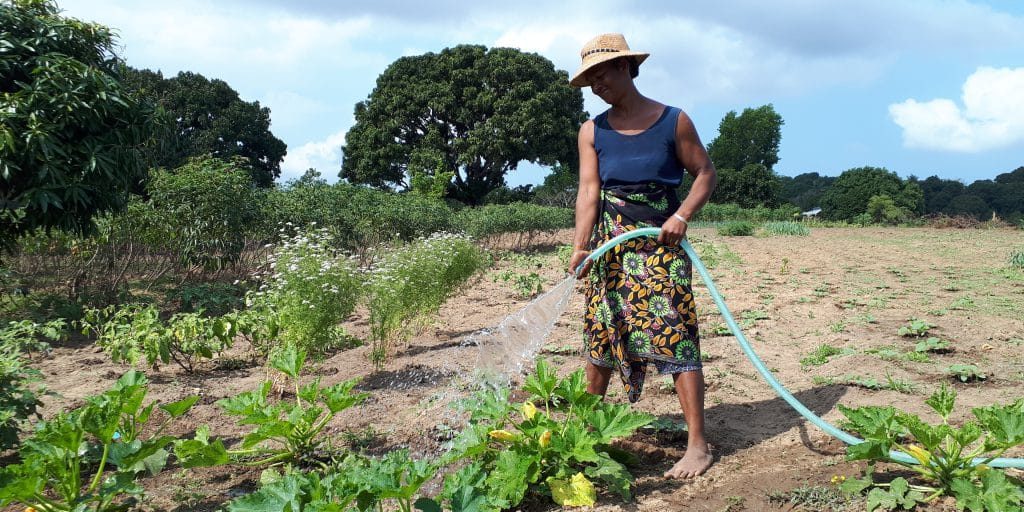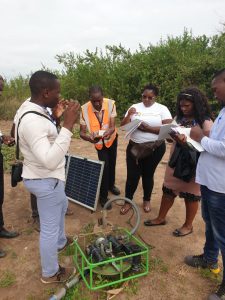Financing solar irrigation
November 4, 2022

Solar irrigation is gaining interest from donors and implementing organisations in the development sector. But despite the low running costs and neutral environmental impact, their uptake is limited because of the high investment cost. Upfront purchase of solar irrigation pumps by (small-scale) farmers is often impossible. Financing these technologies is one of this sector’s key challenges today.
The solar irrigation sector today
When we started developing one of the first solar pumps with a steam engine about two decades ago, solar panels were still a novelty, far too expensive to be widely accessible. But this changed fast, and as the price of solar panels decreased, different solar pumps appeared and quickly spread to the African markets.
Nowadays, solar-powered pumps are very common for drinking water and productive use. Because they use free energy from the sun, running costs are very low. This seems a great advantage for farmers practising irrigation during the dry season. However, not every farmer can afford a solar pump. Solar pumps are too expensive compared to petrol pumps and to the financial capacity of most small-scale farmers of Sub-Saharan Africa.
Although the market is expanding very fast and becoming more competitive, the price of a solar pump is, on average, up to 10 times more than a petrol pump. Even though some technical knowledge gaps are often slowing down the development of solar-powered irrigation systems (SPIS), financial barriers are the limiting factor. Especially for small-scale farmers, who cultivate about 80% of Africa’s irrigable fields, the upfront costs required to invest in solar pumps are simply too high.
Piloting finance solutions for solar irrigation
Luckily, various financial instruments have enabled the solar irrigation market to move forward. Some organisations, projects and governments offer subsidies, some suppliers provide payment facilities, and some financial institutions offer loans. Thanks to these services, the demand for solar pumps is gradually increasing. With time and technical improvements, we hope that the prices of solar pumps will continue to reduce until they become affordable for many, just like what happened with petrol pumps twenty years ago.
To accelerate this process, we are working on several fronts to increase farmers’ access to financial solutions for solar irrigation. One involves training financial institutions on solar irrigation from an economical and practical perspective. Giving credit officers a better understanding of solar technologies and irrigation practices will allow them to develop products and portfolios more adapted to the farmers’ situation. In 2022, we gave this financial training in Ghana and Mozambique. We trained credit officers and managers on the risks and opportunities of solar-powered irrigation and allowed them to discover solar irrigation systems in the field. For most of them, it was their first contact with this sort of technology, and it allowed them to feel more connected to farmers.

Currently, in Burkina Faso and Mozambique, we are piloting the distribution of solar pumps with a payment facility managed by the local pump supplier. These projects supply irrigation solutions with a 50-70% subsidy. The customer must pay the rest according to a payment schedule agreed on with the supplier (usually within two years). In exchange, the supplier ensures that the warranty is respected and that the pump is repaired if needed. The supplier of solar pumps is in charge of collecting regular payments from the farmers. In Mozambique, they use a pay-as-you-go system, and if the payment is not received, the supplier will reach out to the farmer and recover the pump as a last resort. Contrary to bank loans, farmers do not risk losing other assets through collateral. At the end of the “leasing” period, the pump belongs to the farmer.
Even though solar pumps are multiplying on the markets both in variety and quantity, they remain unaffordable for most farmers. That’s why we are exploring different ways to allow them to access these technologies. Our efforts to train finance officers, NGOs and governments on the topics are also meant to create more connections and understanding of farming and irrigation. We hope adapted (financial) solutions will come out of it and increase farmers’ access to relevant technologies like solar pumps.
For more reading (in French): https://www.comite-costea.fr/innovation/pompage-solaire-pour-les-petits-exploitants/
